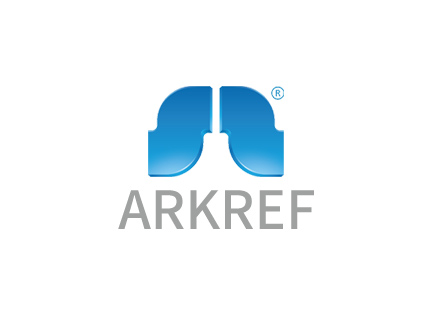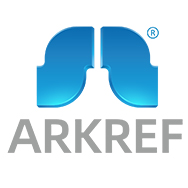How Industrial Chillers Operate in Today’s Industries
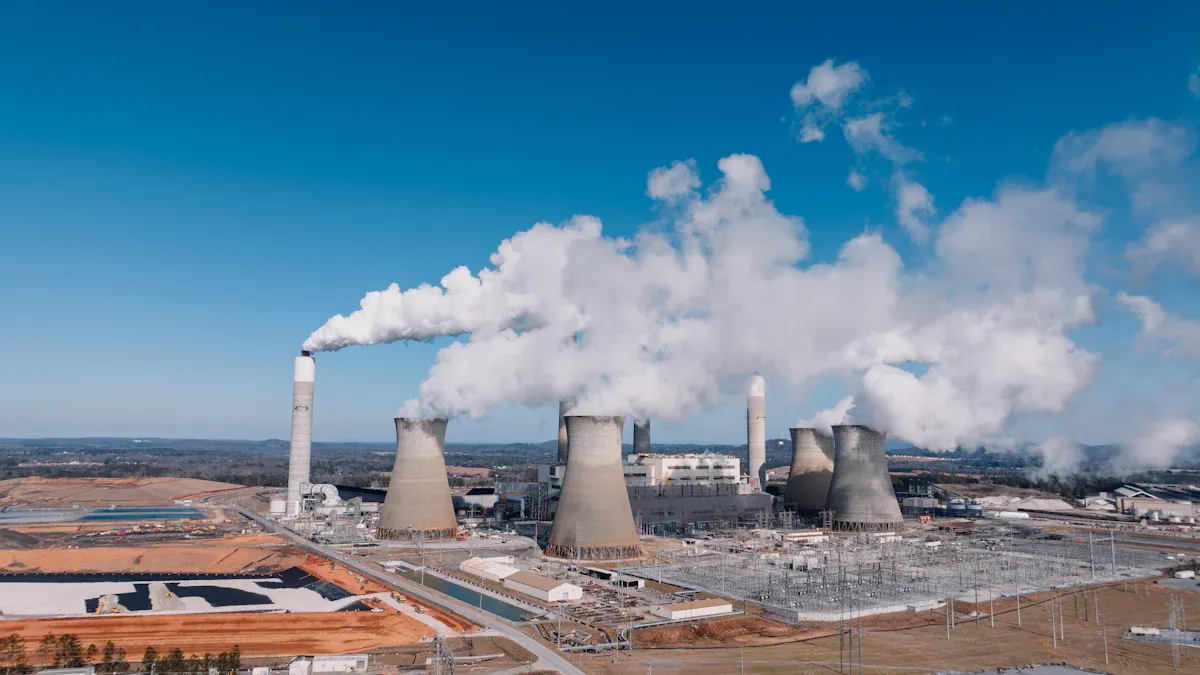
Industrial chillers take away heat from machines or processes. This helps keep temperatures steady in tough places. A chiller uses a refrigeration cycle to cool water, glycol, or brine. It then moves this cold fluid through machines or systems. Good cooling stops machines from getting too hot. This helps them run all the time without stopping.
Metric Description
Numerical Data
Implication for Reliability
Water-Cooled Chillers Market Share
56.0%
Trusted for energy efficiency and uptime
Asia-Pacific Growth Rate
5.5%
Expanding use in industrial applications
Modern data centers need chillers that work the same way every time. Real-time monitoring helps stop problems and keeps things running well.
Key Takeaways
Industrial chillers take away heat from machines and processes. This keeps equipment safe and helps it work well. They use a refrigeration cycle with important parts. These parts are the evaporator, compressor, condenser, and expansion valve. Chillers cool fluids like water, glycol, or brine. Water-cooled chillers save energy and are used in big buildings. Glycol and brine chillers are for special cooling jobs. Modern chillers have smart controls and IoT technology. These features help save energy and make chillers more reliable. They also let people check chillers from far away. Picking the right chiller size and features is important. It helps save water and lower energy bills. It also keeps temperatures steady for better product quality.
Industrial Chillers Overview
What Are Industrial Chillers?
Industrial chillers are machines that take heat away from equipment or processes in big buildings. They use a refrigeration cycle to cool fluids like water, glycol, or brine. The cold fluid moves through pipes and takes heat from machines, products, or the air. Chillers help keep temperatures safe and steady. This protects important equipment and helps everything work smoothly.
There are many types and sizes of industrial chillers. Some use water to cool, while others use air or special fluids. Factories, data centers, and labs need these systems to control temperature. More industries want chillers, so the market keeps growing.
Note: The world market for industrial chillers could reach about USD 2.3 billion by 2032, with a growth rate of 5.8%. Growth comes from biotechnology, pharmaceuticals, and semiconductor manufacturing. New trends include saving energy, making chillers smaller, and adding IoT features.
Aspect | Details |
|---|---|
Projected CAGR (2025-2032) | About 5.8% |
Market Valuation (2025) | USD 1.5 billion |
Market Valuation (2032) | About USD 2.3 billion |
Key Growth Drivers | Growth in biotechnology, pharmaceuticals, semiconductors, and advanced tools |
Market Trends | Saving energy, smaller size, IoT, green technology |
Regional Growth Highlights | Asia-Pacific grows fastest; steady demand in North America and Europe |
Demand-Side Factors | More R&D spending, more automation, need for exact temperature |
Technological Innovations | Small, energy-saving, smart chillers with IoT |
Emerging Applications | Quantum computing, new materials research, special processes |
Challenges & Opportunities | Focus on new ideas and being eco-friendly |
Main Functions
Chillers do many important jobs in factories. Their main job is to take away extra heat from machines, processes, or rooms. This stops machines from getting too hot and keeps products at the right temperature.
Process Cooling: Chillers cool fluids, which then take heat from machines or chemical reactions.
Equipment Protection: Chillers keep temperatures steady, so sensitive equipment does not get damaged.
Product Quality: Many industries need strict temperature control to make sure products are high quality, like food, medicine, and electronics.
Energy Efficiency: New chillers use less energy and give better control, which saves money and helps the environment.
Industrial chillers use different ways to cool, depending on what is needed. Water-cooled chillers are used in big places because they save energy and control temperature well. Air-cooled chillers are good where water is hard to get. Some chillers are made for special jobs, like cooling in dangerous places or reaching very low temperatures.
Chiller Type | Key Features | Typical Use Cases |
|---|---|---|
Water-cooled | Saves energy, controls temperature well | Big factories, data centers, hospitals |
Air-cooled | Flexible, easy to care for | Places with little water |
Scroll/Screw | Quiet, made for heavy work | Industrial plants, production lines |
Specialized | Safe for explosions, very cold | Chemical plants, advanced research labs |
The world market for chillers was USD 11.59 billion in 2023. This shows chillers are very important for big cooling jobs. New technology, like IoT, helps chillers work better and last longer. These improvements help chillers do their main jobs in today’s industries.
Chiller Operation Basics
Refrigeration Cycle
Industrial chillers use a refrigeration cycle to take away heat. This cycle moves heat from one spot to another. It uses a special fluid called a refrigerant. The cycle has four main steps. These are evaporation, compression, condensation, and expansion.
Evaporator: The refrigerant starts as a low-pressure liquid. It takes in heat from water, glycol, or brine. This makes the refrigerant turn into a gas. The cold fluid goes through pipes to cool machines or rooms.
Compressor: The compressor pulls in the warm gas. It squeezes the gas to make it hotter and under more pressure. This gets the refrigerant ready for the next step.
Condenser: The hot, high-pressure gas goes to the condenser. Here, the refrigerant gives off its heat to air or water. The refrigerant cools down and becomes a liquid again.
Expansion Unit: The liquid refrigerant goes through an expansion valve. This valve drops the pressure and cools the refrigerant more. The cold refrigerant goes back to the evaporator, and the cycle starts again.
Tip: A 3D schematic diagram can help people see the whole refrigeration cycle in an industrial chiller. This kind of diagram shows each part and how they connect. Some diagrams are online, but you may need to log in to see them.
A 3D schematic diagram shows the evaporator, compressor, condenser, and expansion unit.
The diagram shows how water, glycol, or brine moves in the chiller.
It helps people see how heat leaves and how the cycle repeats.
Chillers use this cycle to keep water, glycol, or brine at the right temperature. The cold fluid moves through pipes to cool machines, products, or air in factories. This helps control temperature and keeps machines from getting too hot.
How well the refrigeration cycle works depends on many things. Researchers use different ways to check how chillers perform. These include the Coefficient of Performance (COP), energy use, and heat transfer rates. The table below lists some common ways to measure chiller efficiency:
Performance Metric / Efficiency Measurement | Description / Context | Refrigerants / Systems Studied | Methodology / Notes |
|---|---|---|---|
Coefficient of Performance (COP) | Measures refrigeration cycle efficiency | R450A, R134a, R513A, R515B, R1234ze, R600a | Experimental, theoretical, and simulation studies |
Energy Analysis | Based on first law of thermodynamics to evaluate system energy use | Various refrigerants including eco-friendly mixtures | Theoretical and numerical analyses |
Exergy Analysis | Based on first and second laws of thermodynamics to assess system irreversibility | R450A, R134a, R1234ze, R430A, R440A | Experimental and numerical studies |
Heat Transfer Coefficients | Evaluated during condensation and evaporation phases | R450A, R515B, R1234ze(E) | Experimental micro-fin tube studies |
Pressure Gradients | Measured to assess flow and system resistance | R450A, R515B, R1234ze(E) | Experimental studies |
Compressor Power | Impact of refrigerant type on compressor energy consumption | R134a, R1234yf, R450A, R513A, R515B, R600a | Theoretical modeling and AI-based optimization |
Mass Flow Rate | Assessed to understand refrigerant circulation and system performance | R134a and alternatives | Experimental and theoretical studies |
Second Law Efficiency | Efficiency considering entropy generation and irreversibility | R134a, R450A, R1234ze | Numerical and experimental analyses |
Environmental-Economic Analysis | Evaluates environmental impact and cost-effectiveness | R134a and alternatives | Theoretical studies |
Machine Learning Models | Used to predict thermodynamic properties and optimize performance | R450A, R513A, R515A, R600a, R516A, R515A, R515B | Data mining, FCNN with multi-head attention, fuzzy inference systems |
Statistical Validation | Wilcoxon rank-sum test confirms model accuracy and robustness | FCNN model predictions vs REFPROP data | Statistical tests with p > 0.05 indicating no significant difference |
These measurements help engineers make chillers work better and pick the best refrigerants for each job.
Key Components
Every industrial chiller has several important parts. Each part has a special job in the refrigeration cycle. All the parts help the system work well.
Evaporator: This part takes heat from water, glycol, or brine. The fluid gets cold and moves through pipes to cool machines or rooms.
Compressor: The compressor is like the heart of the chiller. It moves the refrigerant and makes it go under more pressure.
Condenser: The condenser lets the refrigerant give off heat. It uses air or water to take the heat away.
Expansion Valve: This valve controls how much refrigerant moves. It lowers the pressure and cools the refrigerant before it goes to the evaporator.
Pumps and Pipes: Pumps move chilled water, glycol, or brine where it is needed. Pipes carry the fluid to machines, products, or air handlers.
Control System: Modern chillers use smart controls to watch temperatures and change the system. These controls help keep the temperature steady and save energy.
Chillers use water more than any other fluid. Water is safe, easy to find, and carries a lot of heat. Some chillers use glycol or brine to reach lower temperatures or stop freezing. The choice depends on what the chiller needs to do and where it is used.
Chiller operation works best when all parts do their jobs. When each part works right, the chiller keeps the right temperature and protects machines. This teamwork helps factories, data centers, and labs run without trouble.
Types of Chillers
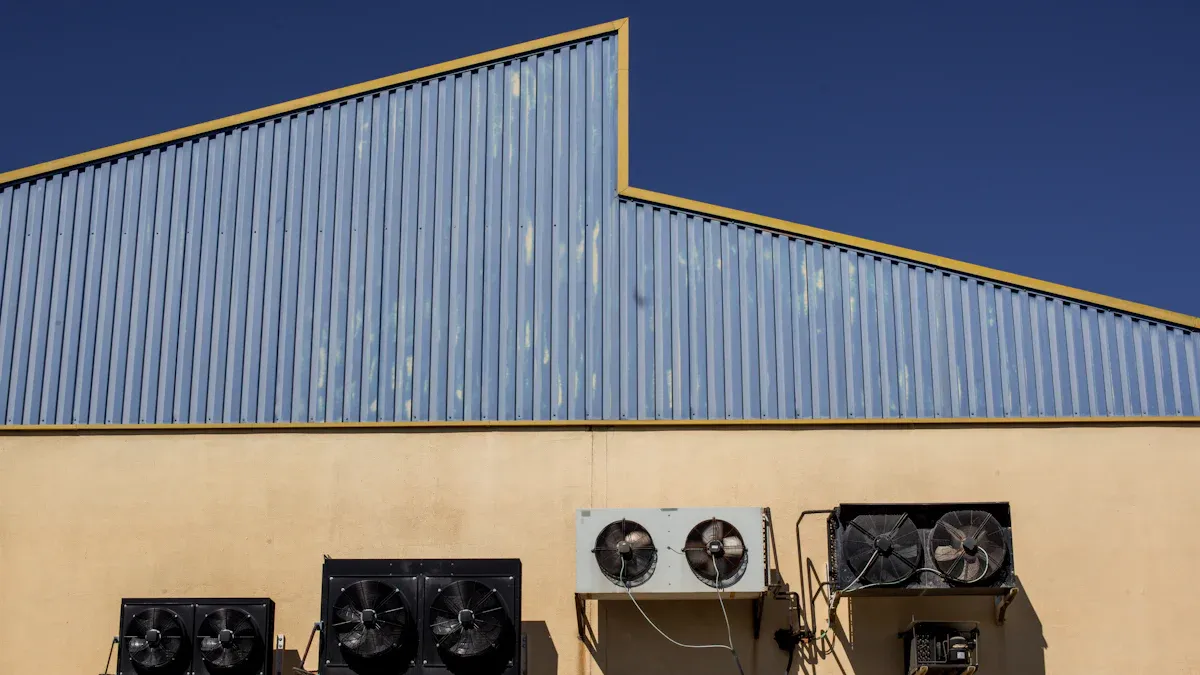
Water Chillers
Industrial water chillers are important in many big buildings. These chillers use water to cool things down. They take heat away from machines and send cold water through pipes. Many companies pick industrial water chillers because water moves heat well. High-performance water chillers are used where cooling must not stop, like in data centers and hospitals.
Note: Industrial water chillers can cool the refrigerant with air or water. Water-cooled models save more energy and work better in hot places.
A normal system has pumps, pipes, and a chiller unit. The water goes in a circle, always coming back to the chiller to get cold again. High-performance water chillers help keep equipment safe and keep production lines working.
Glycol Chillers
Glycol chillers use water mixed with glycol. Glycol is a kind of alcohol that keeps water from freezing. These chillers work well in cold places or when very low temperatures are needed. Many breweries and food factories use glycol chillers to keep products at the right temperature.
Glycol chillers stop ice from forming inside pipes.
They help keep cooling systems safe in winter.
Industrial water chillers can also use glycol if needed. This makes them good for different jobs.
Brine Chillers
Brine chillers use water mixed with salt, called brine. The salt makes water freeze at a lower temperature. Brine chillers help cool things below water’s normal freezing point. Many chemical plants and ice rinks use brine chillers for special cooling needs.
Chiller Type | Main Cooling Fluid | Common Uses |
|---|---|---|
Industrial water chillers | Water | Factories, hospitals |
Glycol chillers | Water + Glycol | Breweries, food processing |
Brine chillers | Water + Salt | Ice rinks, chemical plants |
Industrial water chillers are still the most common choice for many industries. They give strong cooling, are easy to set up, and use energy well. Chillers that use water, glycol, or brine help keep factories and labs safe and working.
Industrial Applications
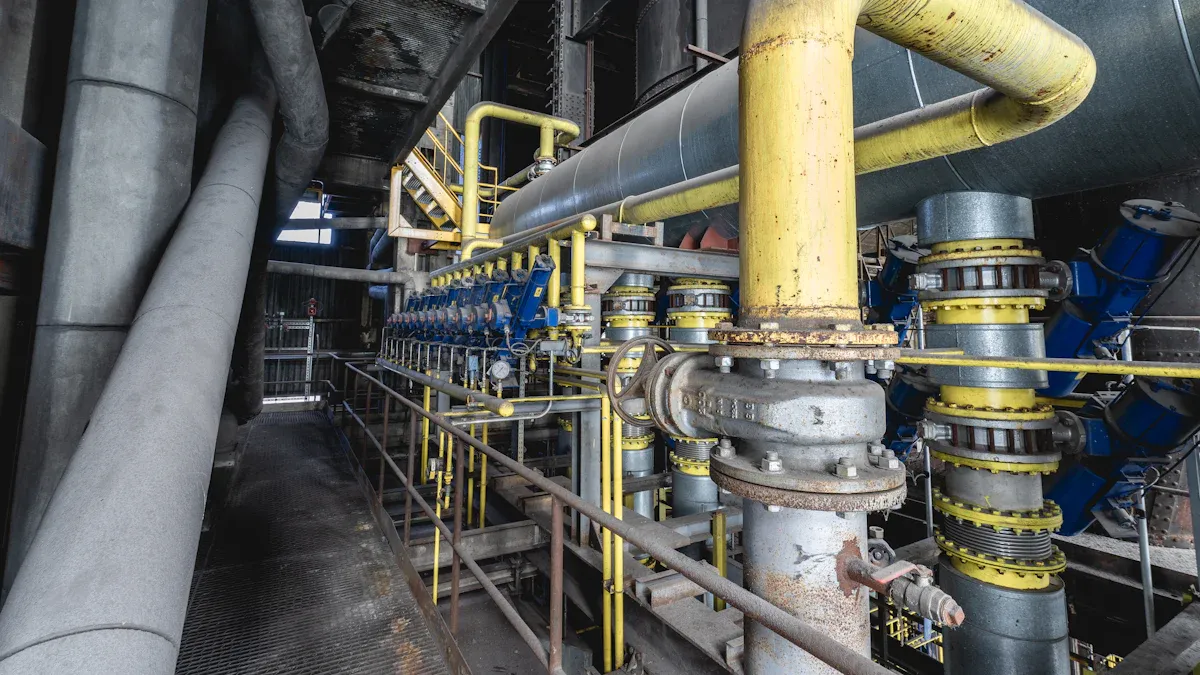
Industry Uses
Industrial chillers are important in many industries. Factories use chillers to keep machines cool and safe. Food and beverage plants use chillers to cool food and drinks. Pharmaceutical companies need chillers to keep medicine safe. Data centers use chillers to stop servers from getting too hot. Hospitals use chillers to keep rooms and equipment cool. Chemical plants and plastic makers use chillers to control heat. Each industry picks a chiller based on what it needs to cool and what fluid it uses, like water, glycol, or brine.
Benefits
Industrial chillers help businesses in many ways. Closed-loop systems use less water. This saves money on water bills and needs fewer permits. Energy-saving compressors and pumps use less power. Companies have fewer breakdowns and their machines last longer. This means less fixing and replacing. These changes help companies save money fast and spend less over time.
Using less water helps local water supplies.
Saving energy helps companies be more eco-friendly.
Good cooling keeps work going without stops.
Less fixing and fewer problems save time and money.
Companies often save money after they get industrial chillers. They pay less for water and energy, do less fixing, and have more uptime. These systems help businesses grow and protect the environment.
Modern Chiller Features
Intelligent Controls
Modern industrial chillers now have smart controls to work better. These controls use sensors and IoT to watch chillers all the time. Operators can check data and find problems early. They can plan repairs before anything breaks. This helps stop downtime and keeps temperatures steady. Many factories and data centers want chillers with these features. They want cooling that is reliable and has fewer problems.
IoT lets people check chillers from any place.
Data analytics show when repairs are needed soon.
Remote management lets people change settings fast.
AI and automation help keep temperatures just right.
Smart controls also help save energy. They change how hard the chiller works to match what is needed. This means the chiller does not waste power when less cooling is needed.
Energy Efficiency
Industrial chillers are now much better at saving energy. New models use inverter-driven compressors and better heat exchangers. These things help save energy and keep temperatures steady. The table below shows how new chillers are better than old ones:
Metric / Benchmark | Modern Inverter Chillers | Traditional On-Off Chillers |
|---|---|---|
Energy Consumption Reduction | Higher energy use | |
Temperature Regulation Precision | ±0.1°C | ±1°C |
Cooling Capacity Modulation | Yes | No |
Environmental Compliance | Meets strict standards | Less compliant |
Modern chillers also use refrigerants that are better for the planet. This helps companies follow new rules and protect nature. Saving more energy means lower bills and less harm to the earth.
Reliability
Factories need chillers that work all the time. Smart controls and energy-saving parts help chillers last longer. Predictive maintenance tools warn people before something breaks. This keeps machines safe and work going. Taking care of chillers and watching them closely helps them last even longer.
Tip: Picking a chiller with smart controls and good energy savings can give more uptime, better temperature control, and save energy for a long time.
Choosing a Chiller
Sizing
Picking the right size chiller keeps things safe and working well. Engineers check how much heat comes from machines or processes. They also see how much water needs to be cooled and by how much. A chiller that is too small cannot cool enough. A chiller that is too big wastes water and energy.
Many companies use market research to help them choose. In Asia Pacific, more people want small portable chillers. These units are compact, cool well, and use less water. Companies look at product types, cooling power, and water use. The kind of user, like a small shop or a big factory, changes what size chiller is best.
Tip: Always pick a chiller that can handle the most heat. This keeps water cool and protects machines.
Key Features
Modern chillers have features that help save water and energy. Smart controls use sensors to watch water flow and temperature. IoT and AI can spot problems before they happen. These tools keep water at the right temperature and help stop breakdowns.
Being eco-friendly is more important every year. Many companies want chillers that use less water and follow green rules. Saving energy is also a big reason to pick new models. New chillers use less power and recycle water better.
A good chiller should have:
Cooling that can be changed
Controls that are easy to read
Strong pumps for water
Systems that lose little water
Support for remote checks and automation
Feature | Benefit |
|---|---|
Smart controls | Better water management |
Energy efficiency | Lower costs, less waste |
Portability | Easy to move and install |
Compliance | Meets water and energy rules |
Digital integration | Supports Industry 4.0 goals |
Things like weather and water supply also matter when picking a chiller. Companies compare brands and see which models work best where they are. By checking these features, businesses find chillers that fit their needs and save water.
Industrial chillers are very important in places like factories and data centers. They take away heat and keep equipment safe. Chillers also help products stay high quality. Picking the right chiller helps things work better and saves energy.
The market for industrial chillers is growing quickly. Smart controls and energy-saving parts are becoming more common.
Water-cooled chillers are still a top choice because they work well.
Many companies now use chillers that connect to the internet for real-time checks and to save money.
Getting a chiller with new features helps a business last longer and be more eco-friendly.
FAQ
What is the main job of an industrial chiller?
An industrial chiller takes heat away from machines. It keeps things cool so factories work well. This cooling stops machines from getting too hot. It also keeps products at the right temperature.
How often should a company maintain its chiller?
Most companies look at and fix chillers every three to six months. Doing this often helps stop problems and keeps the chiller working right.
Can a chiller use fluids other than water?
Yes. Many chillers use glycol or brine instead of water. Glycol keeps water from freezing in cold places. Brine helps chillers get even colder. The fluid depends on what needs cooling.
Why do factories choose water-cooled chillers?
Factories like water-cooled chillers because they save energy. They work well in big spaces and cool large areas. These chillers help lower energy bills.
What are signs that a chiller needs repair?
Some signs are strange sounds, higher energy bills, or weak cooling. If the chiller leaks or shows error codes, it may need fixing. Checking early helps stop bigger problems.
See Also
How To Choose The Right Industrial Water Chiller Unit
A Comprehensive Guide To Water Chiller Units Functioning
Proven Strategies To Maximize Walk-In Chiller Performance
Important Factors When Choosing Industrial Tube Ice Makers
How Spiral Freezers Drive Innovation In Industrial Processes
